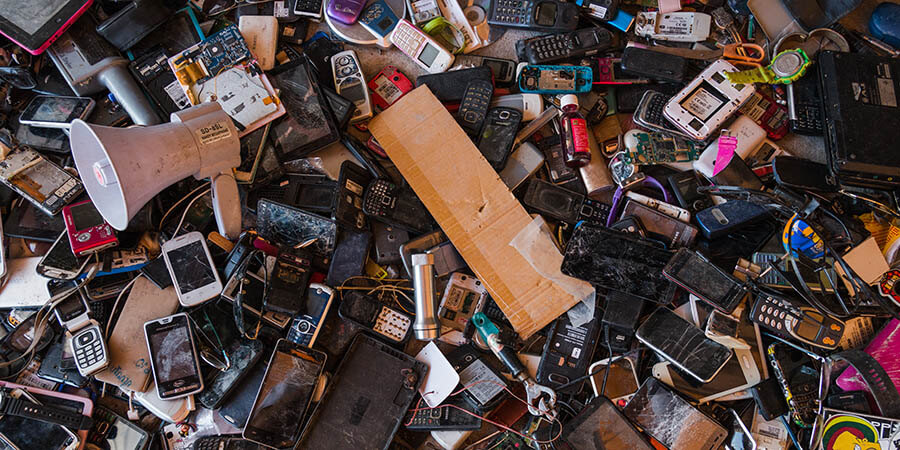In a stark warning, UN agencies have highlighted the concerning amount of electronic waste generated globally—a staggering 62 million metric tonnes in just one year. Despite this alarming figure, the recycling rates for electronic waste remain dismally low; with only 22% of that waste being formally recycled. Electronic waste, or e-waste, poses a significant environmental and health hazard if not properly managed.
E-waste, categorized into six main types including lamps, small IT and telecom equipment, screens and monitors, temperature exchange equipment, large equipment, and small equipment, represents a significant environmental challenge. Globally, as previously stated, over 62 million metric tons of e-waste is generated annually, translating to an average of approximately seven kilograms per capita.
The proliferation of rapidly advancing technologies, coupled with heightened consumer demand for electronics and shorter product life cycles, has fueled the exponential growth of e-waste. Between 2010 and 2019 alone, e-waste generation surged by around 60 percent, and this trend shows no signs of abating. Projections suggest that by 2030, annual e-waste production could soar to an astonishing 75 million metric tons. Notably, Asia accounts for nearly half of the world's e-waste output, with China emerging as the leading producer. Despite Asia's overall dominance in e-waste generation, Europe produces almost three times more e-waste per capita.
The Need for E-Waste Regulation
Recycling electronic waste is crucial to mitigate its adverse impact on the environment and human health. Furthermore, proper recycling processes can recover valuable resources from e-waste while reducing the volume of hazardous materials that end up in landfills or are improperly disposed of. Governments, industries, and individuals must, therefore, prioritize responsible e-waste management practices to curb this growing environmental challenge.
To address this challenge effectively, governments must implement legislation that promotes responsible recycling practices and reduces the impact of e-waste on the environment. Currently, only 42% of countries have e-waste legislation.
Some Arab States, including Algeria, Egypt, Kuwait, Lebanon, Qatar and the United Arab Emirates have also issued national laws on the import and export of hazardous waste, including e-waste. In particular, Egypt has legislation that restricts the import of EEE equipment older than five years from the year of production, with the exception of some EEE in good condition, and completely prohibits the importation of e-waste. In addition, article 46 of Egypt’s Telecommunication Regulation Act (No. 10/2003) prohibits the import of used telecommunication equipment for the purpose of trading (GIZ 2014a).
The United States has various state-level laws regulating electronic waste management, with some states implementing producer responsibility programs. Additionally, the federal government has implemented regulations such as the Resource Conservation and Recovery Act (RCRA), which governs hazardous waste disposal, including certain types of electronic waste.
The EU has established the Waste Electrical and Electronic Equipment (WEEE) Directive, which mandates the collection, recycling, and proper disposal of electronic waste. It places responsibility on manufacturers to take back and recycle their products.
Furthermore, Japan implemented the Act on Promotion of Recycling of Small Waste Electrical and Electronic Equipment, which obliges manufacturers to collect and recycle specified small electronic devices.
South Korea enforced the Resource Recycling of EE Equipment and Vehicles Act, which requires manufacturers to register and manage their electronic products' recycling processes. Moreover, the implementation of a robust recycling system aims to further manage the end-of-life disposal of electrical and electronic equipment.
Additionally, China set up the Waste Electrical and Electronic Products Disposal Fund to form a comprehensive and sound legal and regulatory management system for e-waste recycling and pollution control. The management system encompasses the collection, transportation, treatment, and disposal of electrical and electronic equipment, as well as aspects like production, import, export, sales, and other related activities.
Despite these initiatives, only a few countries properly implement, enforce, and appropriately finance environmentally sound e-waste management. By creating fair and economically viable regulatory environments with clear targets, policymakers can drive the transition towards a circular economy for electronics.
The Importance of E-Waste Recycling
Recycling plays a crucial role in mitigating the negative effects of e-waste. By recovering valuable materials from discarded electronics and diverting them from landfills, recycling not only conserves resources but also reduces pollution and greenhouse gas emissions associated with electronic waste disposal.
It is estimated that global e-waste contains approximately USD 60 billion worth of raw materials, including gold, palladium, silver, and copper. Despite this significant value, only 17 percent of the world's e-waste is reportedly collected and adequately recycled each year.
The key solution to the mounting problem of electronic waste involves raising awareness about recycling, implementing effective recycling programs, and fostering innovation in recycling technologies. By educating individuals and businesses, implementing policies like extended producer responsibility, and investing in research and development (R&D), a more sustainable future can be created by responsibly managing electronic waste.










